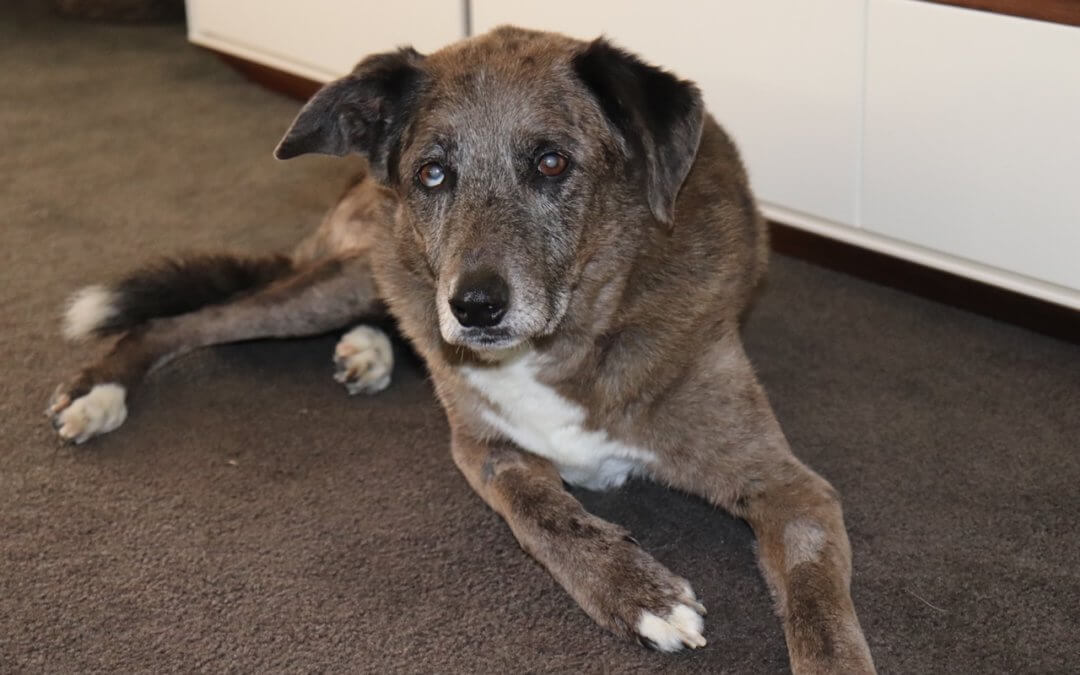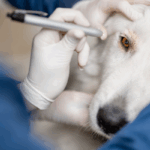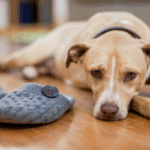In October 2019 Jack and Jacinta discovered that their beloved dog Bowie, who some of you may have seen in a print that takes pride of place in one of the clinics consult rooms, had a bleeding tumour on his spleen. It was determined that to give Bowie the best chance surgical intervention was required, and his spleen was removed. The tumour was sent away for histopathology to determine the type of tumour present. Bowie recovered well from surgery but unfortunately the results of the histopathology revealed that the tumour was an aggressive blood vessel tumor called a haemangiosarcoma. These types of tumours can spread rapidly and cause new tumors to develop in other organs throughout the body. Haemangiosarcomas are prone to bleeding, often resulting in minimal manageable quality of life for a patient. The average life expectancy from surgical removal of the mass with no further treatment is 6 weeks.
Bowie recovered well from his surgical procedure and had no clinical signs of further development of additional haemangiosarcoma’s through ultrasound and staging. With much consideration and specialist opinion it was decided to trial him with chemotherapy. Chemotherapy is the therapeutic administration of a drug, in this case of Doxorubicin, into the vein that eliminates cancerous cells to allow the body to reset. This treatment can be very taxing on a patient, and it is monitored very closely. Both Jack and Jacinta decided that if Bowie didn’t respond well to any of the treatments in the course then they would stop and re-assess his quality of life. Keeping him as comfortable as possible was the number one priority, while enjoying the time they have left with him.
Thankfully Bowie has been showing positive signs throughout treatment, receiving 3 out of 6 scheduled doses of Doxorubicin. The only side effect to be seen at this stage in his care has been mild gastro-intestinal irritation but he has otherwise maintained his happy and go lucky demeanor.
This was our clinic’s first time handling injectable chemotherapy treatment. One thing that this case has allowed us is to gain experience in the Occupational Health and Safety implications of Chemotherapy treatment. We have found Bowie’s case easy to manage. He attends the clinic for his infusion every 3 weeks, then sits and has cuddles with us during the procedure to ensure that the infusion runs directly into his vein without any movement. He is staying only for the treatment then going home straight away so his stay is short and not too stressful.
His home care management is simple with anti–vomiting medications routinely after treatment. There are minimal traces of the cytotoxic medication in his waste so using gloves to clean it up and disposing it into a bag is the best way to prevent any exposure. Pregnant people however cannot have any contact with his waste for 5 days after the procedure. Bowie is monitored very closely being a very much-loved member of a vet family!
We know that the ‘cancer’ diagnosis can be a scary one to come to terms with and certainly not every cancer patient and chemotherapy patient is the same. We are however happy to discuss all cases with you, and share our personal experiences with our own pet, when deciding the best course of treatment for client’s pets.






